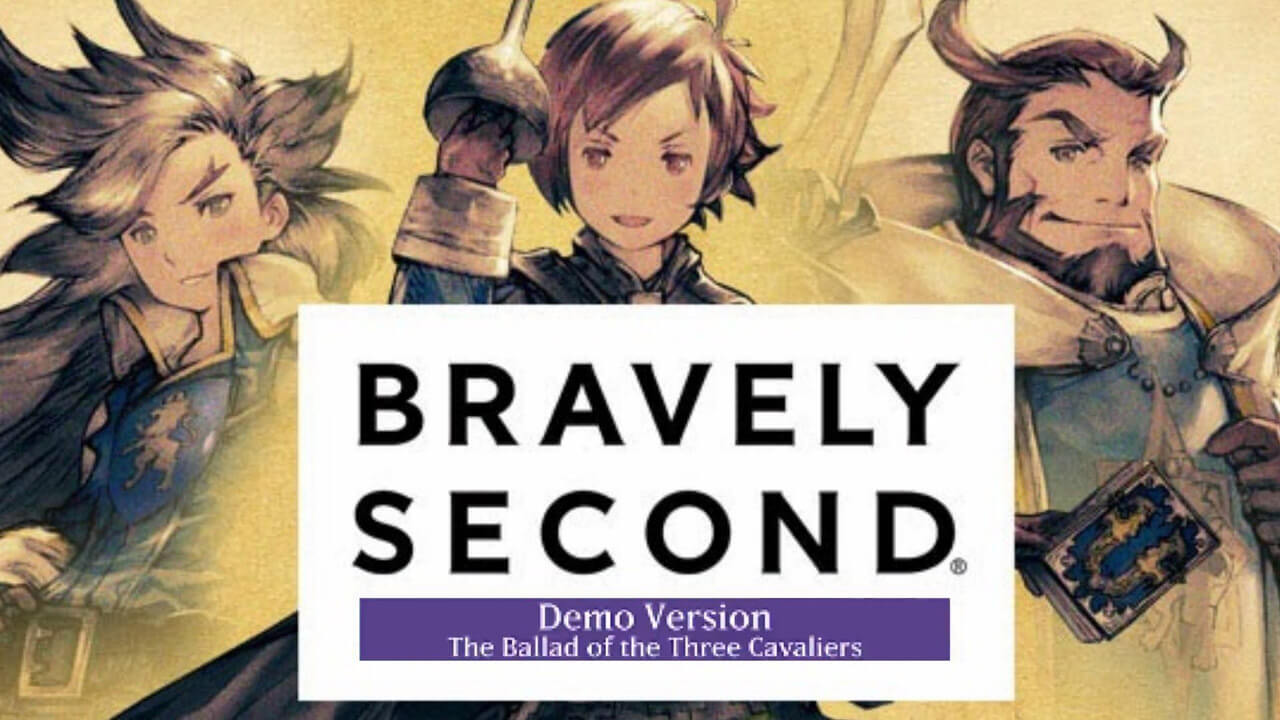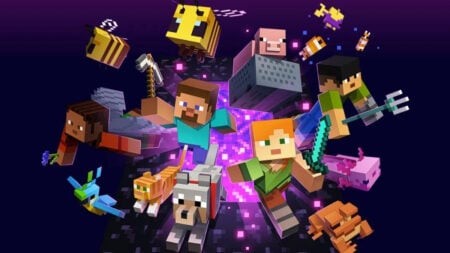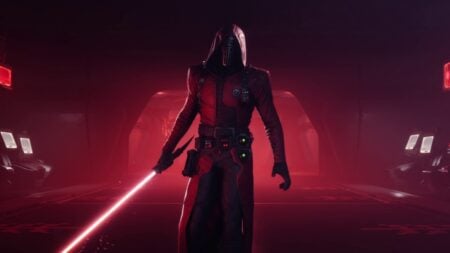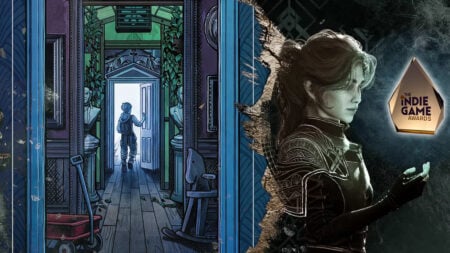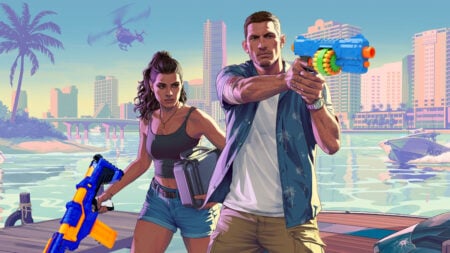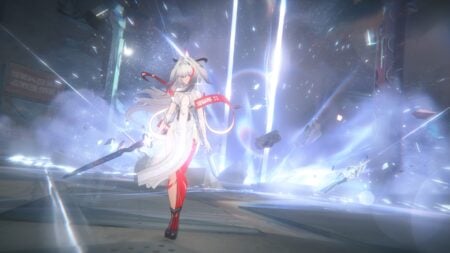Bravely Second, the long-awaited sequel to hit 3DS RPG Bravely Default, received its North American demo yesterday. Taking place on a small continent with one city, the demo introduces a number of new and old characters and provides several dungeons to explore. Bravely Second looks, feels, and plays differently from most other RPGs, and the sequel’s added mechanics can be a bit overwhelming at first. But the BP-reliant battle system adds both strategy and whimsicality to the mix, resulting a deep and unique experience, even in the demo version. Be warned as my walkthrough contains spoilers.
The demo begins with an intro movie featuring Pope Agnes. The 3DS gyroscope is used, and I had to turn sideways in my chair to see what was going on. Agnes, with time running short before an impending capture (or possibly worse), gives some quick words of reassurance to the player and begs them to save her world.
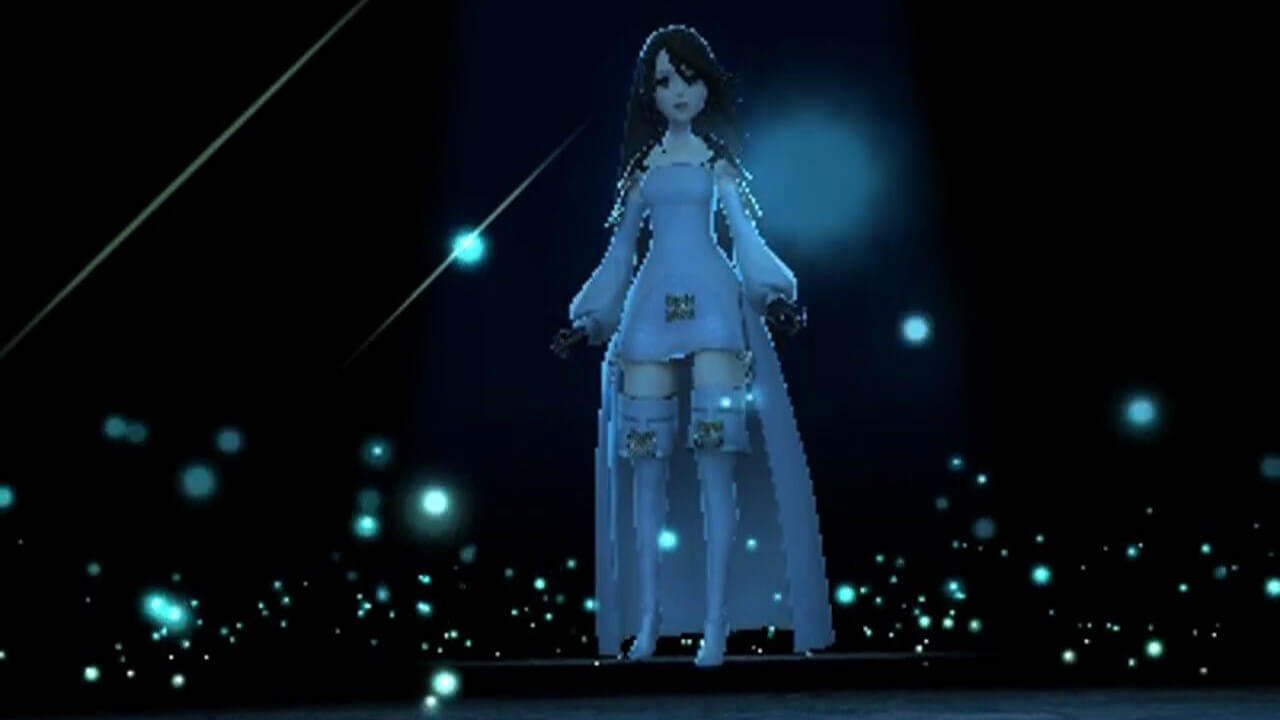
Enter Yew, Janne, and Nikolai, three of the four playable characters. They’ve just reached the city of Al-Khampis and check in with the somewhat air-headed Agnes, who tells them their guide should arrive shortly. With said guide nowhere in sight, the three decide to explore a bit. After visiting some of Yew’s and Janne’s 0ld haunts, the crew meets up with Magnolia Arch (Ba’al buster!) who dubiously claims to be their guide.
At this point, I dive into the menu to see what sort of equipment I have. There are also a variety of character classes (called jobs) available from the start. Seeing Nikolai is a mage-type character (though not limited to being so), I give him the astrologian class so he can support the party. Yew receives the Wizard job for its attack spells, and Janne is left as-is. I see Magnolia is equipped with a spear, so I switch her to the Valkyrie. With that done, I buy a new spell for Nikolai and talk to the townspeople for a bit.
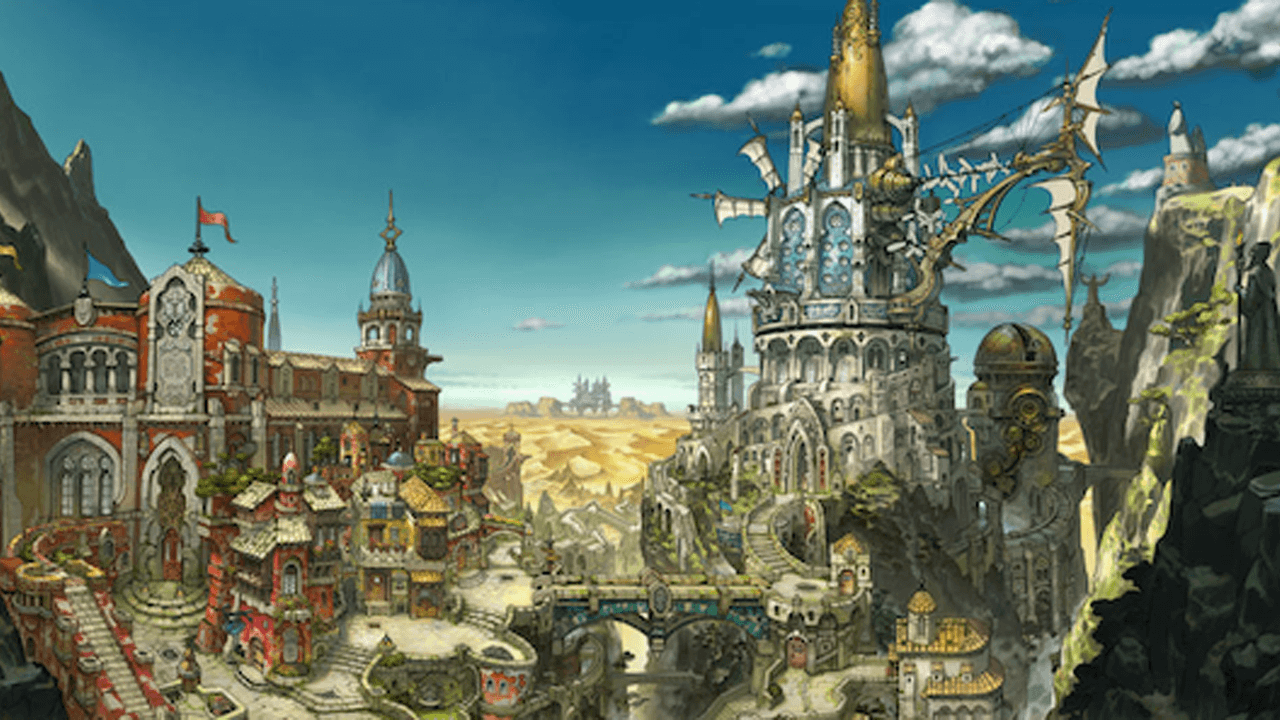
I’m given two quests. One is to kill some monsters on the world map. In battle, I am able to attack, use job-specific abilities, items, Brave, Default, or try to run. By Defaulting, a character gains one BP at the end of the turn, which can be used up with Brave to enable that character to make another move that turn. Digging into abilities, I have Nikolai use magic to boost Magnolia’s attack. Yew and Janne use regular attacks and Magnolia Defaults. Next turn, Magnolia uses an attack on all enemies by consuming the saved BP and wipes the monsters out.
My first quest is complete at around level 3. By then, I’ve learned of someone lolling about at an oasis. I go there and find out the someone is a Red Mage named DeRosa. He challenges me to battle. With a strong feeling I’m nowhere near ready for this fight, I accept. After taking him down to half-health, he sacrifices future turns using Brave three times (putting his own BP in the negative) to use several spells in a row on my party. Had he failed to win that turn, he’d have had to wait for several turns while his BP recovered and I’d have been able to do as I pleased until then.
I leave Derosa for later, leveling up until I’m at the recommended level for a cave where my other quest is located. A series of enemy ambushes where the monsters get a free preemptive turn force me to retreat, but I am soon back and find the going easier by sacrificing BP to cast four fire spells every turn for easy victory. I find what I need from the cave, rest up in the city, and return to DeRosa to take my revenge. This time, I have a new trick: I bought a reflective spell from the shop that bounces his ice attacks back at him. I defeat DeRosa easily this time and earn his Red Mage job. At this point, I have more jobs than characters, so I assign secondary jobs to each character from the Abilities menu and switch Yew over to the new Red Mage class. This allows each of them to use two different job-specific abilities, for a total of eight sets.
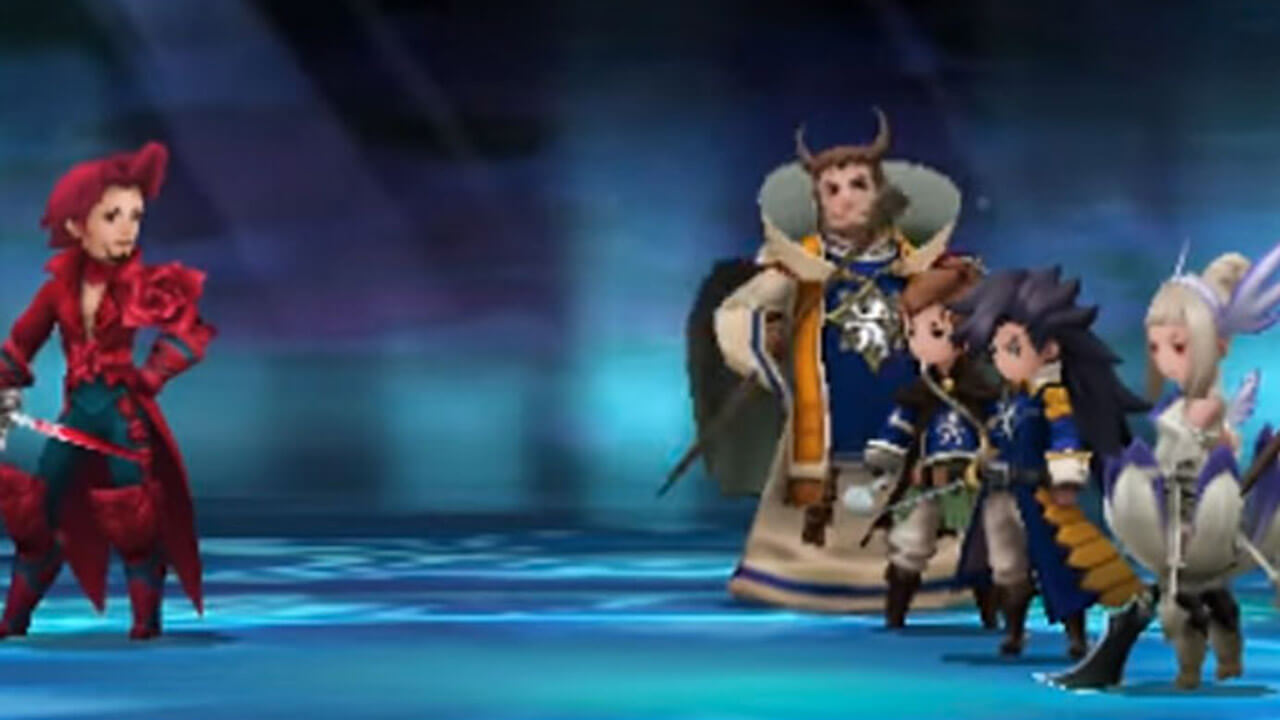
Returning once more to Al-Khampis, I learn of two more suspicious characters in the cave I’d explored earlier. Since I’m far stronger than the overworld monsters and don’t want to bother with them, I press R and set the encounter rate to -100%, ensuring I see neither hide nor hair of them. At the end of the cave, I discover the Performer Praline ala Mode and Swordmaster Kamiizumi, who engage me in battle. I correctly identify Praline as a support class and Kamiizumi as the damage-dealer. Since the latter uses counter-attacks when hit, I save him for later, scanning Praline to reveal her hit points.
With Nikolai powering up my fighters and casting lightning damage, I use Yew as my healer and Janne and Magnolia as physical attackers. Janne uses regular attacks while Magnolia uses the Jump technique, removing her from the fight for a turn before coming down with extra power on Praline. The Performer goes down after a few turns and I turn my attention to the Swordmaster. I have no defensive spells (though I could have bought some), so I continue to rely on Yew’s healing as I mix up my offensive moves.
Kamiizumi can counter either spells or attacks, so I refrain from having everyone use one type. I also keep from using more than one Brave action per turn, as I don’t want him countering multiple consecutive attacks and killing one of my party members. Through patience and wit, I defeat Kamiizumi with no serious issues and win the Performer and Swordmaster jobs. Since Janne is still his default (Default, ha ha) class, I change him to Swordmaster and buy him a new sword. I don’t bother with the Performer since I already have magic support.
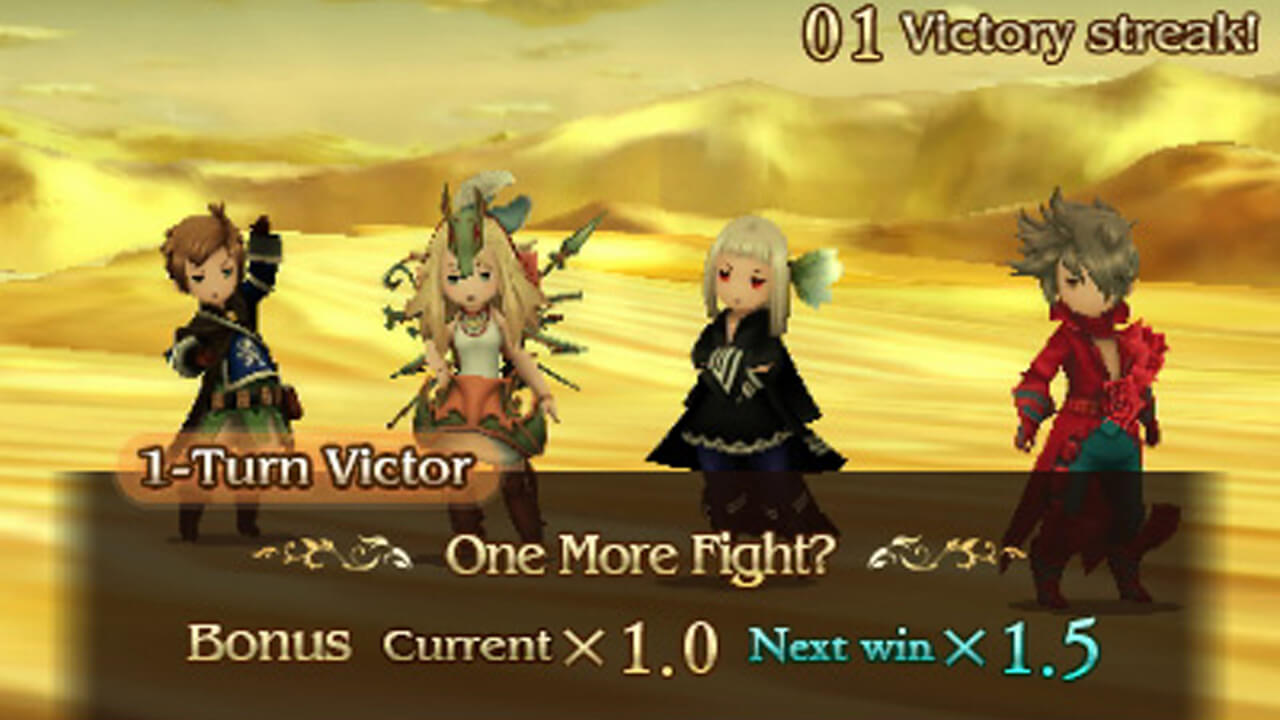
That concludes my first two hours playing the Bravely Second demo. While I was cautious at first and relying heavily on Magnolia’s power to sweep the monsters, I soon came into my own and fought more aggressively by taking loans on BP I didn’t have to finish fights early (as long as you aren’t in the red, each party member can move up to four times in a turn, including enemies. If your BP goes negative, you have to sit there until it replenishes). The two hours I spent playing Bravely Second passed by in a flash, and it was very reluctantly that I put it down in order to write this article. The game explains each of its mechanics, but does so through skippable text, for better or worse.
If you played the first game and liked it, you’ll like Bravely Second. If you’re new, don’t be discouraged by the seeming complexity of the mechanics. The game is easy enough to learn and has a way of keeping you engaged with total customization of the difficulty and near-infinite strategies players can employ in battle. All the familiarity of the first game’s style and mechanics is present, right down to the small details. Judging solely by the demo alone, Bravely Second is shaping up to be an excellent RPG and a worthy sequel.

